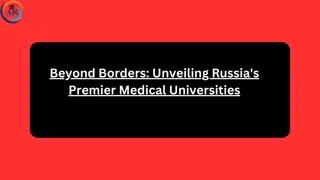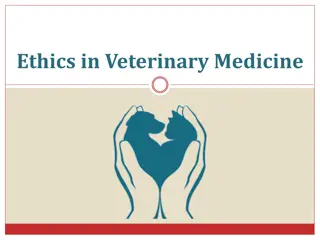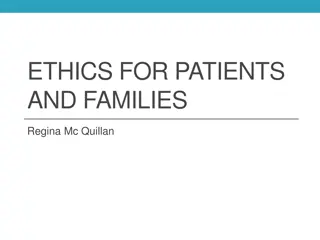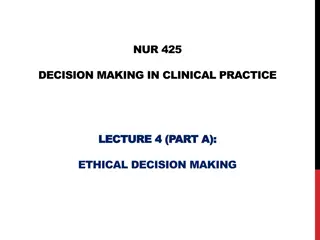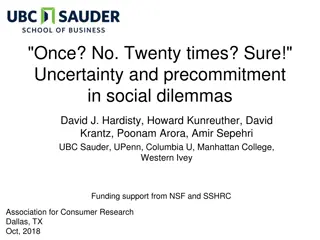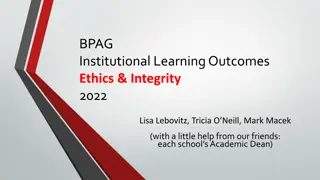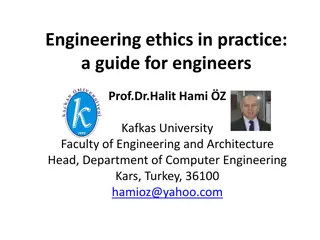Mennonite History and Social Context in Russia: An Examination of Wealth Disparities and Ethical Dilemmas
Explore the historical context of Mennonite communities in Russia in the early 20th century, focusing on disparities in wealth, estate conditions, and ethical challenges faced by both landowners and laborers. Delve into the complex dynamics of social class, representation, and actions of prominent figures like Makhno amidst a backdrop of revolution and occupation.
Download Presentation

Please find below an Image/Link to download the presentation.
The content on the website is provided AS IS for your information and personal use only. It may not be sold, licensed, or shared on other websites without obtaining consent from the author. Download presentation by click this link. If you encounter any issues during the download, it is possible that the publisher has removed the file from their server.
E N D
Presentation Transcript
Counter Views of When they Shall Ask
Mennonite Factoids 1914 population 100 000 people By 1914 There were the two main colonies of Chortitza and Molotschna and forty daughter colonies. Occupying nearly 12,000 km (4500 mi ) 2, 880 00 acres. Red is land occupied by Mennonites.
Estates 500 Mennonite estates in Russia in 1914 Largest was 300 000 acres. 21x21 miles or Black square in the red square. Average estate earned 200 000 rubles a year. The average teacher earned 600 rubles a year The average female peasant earned 40 rubles a year
Who could afford photographs and houses like the ones portrayed in the movie? How well represented were the 30% of the Mennonites who did not have any land and were poor? What class of people did the movie focus on?
Estate Conditions A representative incident: a Mennonite landowner caught a Russo- Ukrainian labourer stealing grain, so he pushed the labourer into the grain bin and nailed down the lid. He waited two days and then called the mayor to have the captive flogged (Loewen & Prieb, 1996, p-21). Many Mennonite landlords practised collective punishment; when theft was suspected all the potential suspects were flogged, so as to teach a lesson to both the guilty and the innocent (Loewen, p-53). The principle of pacifism had therefore been abandoned by wealthy Mennonites long before the Russian Revolution. At the age of 11 Makhno began working as an ox drover on the Janzen estate in Silberfeld. In his memoirs he writes: "At this time I began to experience anger, envy and even hatred towards the landowner [Janzen] and especially towards his children - those young slackers who often strolled past me sleek and healthy, well-dressed, well-groomed and scented; while I was filthy, dressed in rags, barefoot, and reeked of manure from cleaning the calves' barn."[17]
Did the movie give an accurate representation of the Makhnovites? What was Makhno s motivation? Did Makhno have justification for his actions? How much wrong doing justifies the actions of rape and murder? How do you change a social situation like the one presented in Russian history?
Makhnovites Makhnovists had families who had suffered under the German- Austro-Hungarian occupation in 1918. Makhno's own brother, Emelian - a disabled war veteran - was murdered and his mother's home burned to the ground by the occupation.[19] The Mennonites themselves, having been stripped of their wealth and property during the revolution, embraced the occupation who promised to reestablish them as landowners. Some Mennonites accompanied punitive detachments against the peasantry, which greatly contributed to the growing bitterness between Mennonites and Ukrainians. Several Mennonite historians acknowledge that the initial aim of the Selbstschutz was to reclaim material wealth confiscated during the revolution. For example, Loewen & Prieb recount how 'Mennonites armed themselves under Austro-German army tutelage, and together with other estate owners organised posses that attacked and sought to retake estates seized by rebels
Selbstshutz Breaking with nearly four centuries of pacifism, tacit approval of the Selbstschutz was given by the Mennonite leadership at the Lichtenau Conference [June 30- July 2, 1918].[22] Intended exclusively for the defence of the colony, with the arrival of General Denikin's White Volunteer Army the Selbstschutz was gradually drawn into offensive operations against Makhno. Later in the civil war some Mennonites also formed ethnic battalions within the White Army.
Was the Selbstshutz successful? The year 1919 saw the greatest number of Mennonites killed - some 827 or 67% of all Mennonite civil war deaths According to the research of Peter Letkemann 3,336 Russian Mennonites, or three percent of their total population, died between 1914 and 1923.[21] Ninety-six percent of these deaths occurred in Ukraine.[23] The executions of Mennonites overwhelmingly occurred in 1919 (see Letkemann, p-2). The guerrilla insurgency against the Austro-German occupation began in the fall of 1918, and the term Makhnovist was first used at the battle of Dibrivka on 30th September 1918 (see Arshinov, pp-65-67).15 According to Klippenstein, Makhno sinitial attacks against the German Austrian army units shifted to include local Mennonite farms and villages at least as early as October, 1918 (p-6). But the Molotschna Selbstschutz was established as a military force on 23rd April 1918 (Klippenstein, p-6); and by the time of the July 1918 general conference at Lichtenau, armed Mennonites were obsessed with thoughts of vengeance (Dick, p-138). The worst persecution came after the Selbstshutz was formed, not before. The Makhnovites allied themselves with the Red army during the worst time. How would the Communists have felt about Mennonites after the war was over?
Was the Selbstshutz popular? 2700 infantry men, 20 companies ( 7 non- Mennonite Germans) 300 Cavalry they held off Makhno about 20 miles north of Molotschna colony 12, 000 Mennonite men military age during the war, doing either forestry (majority) or red cross. 2700/12000= 22% 13/20 were Mennonite so 65% of 2700 men is 1755 Mennonite men in Selbstshutz, that would be 14% of the available male population So between 78-86% of the Mennonite men chose to pacifism as a response to the turmoil of the civil war.
https://libcom.org/history/makhnovists- mennonites-war-peace-ukrainian-civil-war http://en.wikipedia.org/wiki/Nestor_Makhno Loewen & Prieb, 1996





